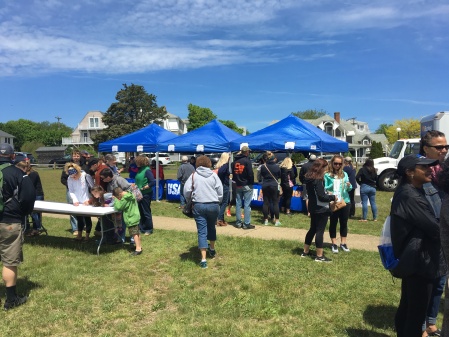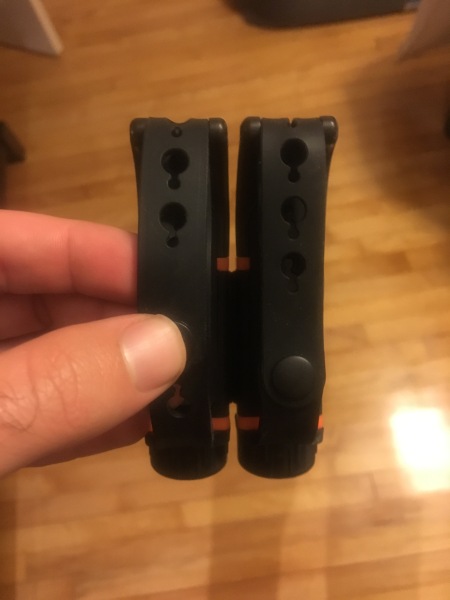Obligatory: It’s been too long since I’ve posted intro! It’s now been 10 days since I completed Challenge Roth, but because I only got back to the USA yesterday, I’m considering this a very early attempt at getting a race report up. That said, I make no representations that I actually finished this post on 7/11, only that I started it on that date. I’m going to do this one a little differently than others in an attempt to not have one epic post about the whole race, while providing some hopefully helpful information about what it’s like doing a tour package as part of the race experience. I’m going to try to stick to talking about the official tour events, rather than having this be a total travel diary.
I suppose I should start by saying exactly what Challenge Roth is. Roth is an Ironman distance race that used to be part of WTC (Ironman) but split at some point. It’s now in its 35th total year. Roth has to be one of the hardest races, or at least triathlons, to sign up for, selling out within a minute in 2015 and I think even faster since then. As a result, one of the only really good ways to get into the race is to go through a group that offers a tour package that includes the opportunity. After looking at a couple options, I ended up going with RaceQuest Travel (hereafter “RQT”) and, overall, I’d say I was very happy with the experience. They worked with us to do a package for R and me and it wound up being a very good choice to have R be able to take all the bus trips the athletes did, making transportation much easier.
We arrived in Munich, Germany on June 26 after flights from Boston to London, then on from there. One thing I learned, you have to pay for soft drinks on British Airways flights from Heathrow to Munich! Weird. After gathering our bags, all of which thankfully arrived without incident, we went to go meet our RQT contacts. Along the way, we wound up meeting a lovely couple also doing the race from Couer D’Alene, Keith and Brenda, that would become our “vacation friends” for the rest of our time in Germany. When we’d all arrived, RQT loaded up our luggage onto a bus and we began the roughly 90 minute trip to our base hotel in Nuremberg.
We stayed at the Ramada Parkhotel in Nuremberg, which I would describe as “absolutely fine.” When we arrived, I quickly unpacked the clothes and race fuel I’d packed in my bike bag then brought the bike to the pop-up bike mechanic room that RQT had set up. Because I have no clue how to put my bike together, at least I never attempted it, I signed up through RQT to have their mechanic take care of it, which eliminated at least one source of stress for me. This is one great aspect of RQT and I have nothing but good things to say about how my bike was handled. They also had space for the bike bag itself, which meant I didn’t have to take up hotel room space with it.
We kicked off the first full day of the tour with a 30 minute shakeout run lead by a former pro triathlete. There is a large system of bike/running paths in Nuremberg and we wound up using the run as part training/part sightseeing opportunity. On this run, we stopped at Soldier’s Field, which is where Hitler would give speeches to huge crowds of Nazis. It was a very powerful monument, which did not shy away from horror wrought by the Third Reich.

Even if you don’t get to Nazi ruins, I’d highly recommend avoiding the urge to sleep in the first morning you arrive in a new country for a race and instead getting up and going for a run, which I found helped with the jet lag.

In the afternoon, we took a walk through town to get to a local pool. It felt good to get the chance to put in a couple workouts, however short, in the same day and get in the mood of being an athlete. I couldn’t help but laugh at the German word for “pool,” as it seemed a direct message to me about my own technique in the water.
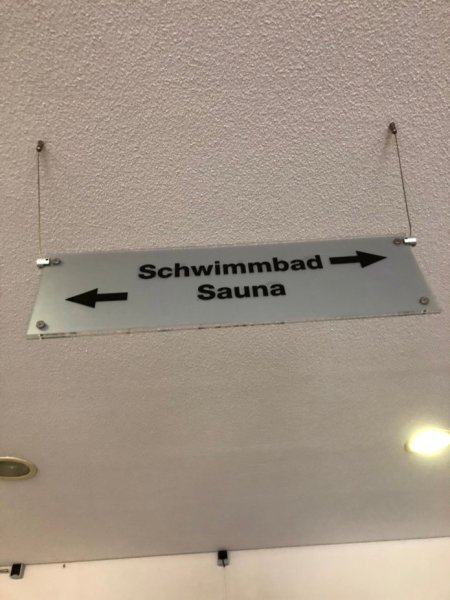
The pool itself was absolutely fantastic. 25 meter lanes of slightly cool, but comfortable, water. It was a bit of confidence boost to see that I wasn’t the slowest swimmer in our group and I felt nice and comfortable with my stroke, even with a bit of a layoff. I think this swim set me up very well for my eventual race swim.

That night, we boarded a bus to take our first trip into Roth itself for a welcome dinner hosted by Roth’s Vice-Mayor and the CEO of Challenge Roth, who took over the position from his father. This was our first taste of what the race atmosphere would be like, and it definitely whet my appetite for race day. The VM was an absolutely adorable man who didn’t speak any English, but still managed to convey how excited he was for race weekend, and how much it meant to the people of Roth to put on a good day of spectating.

The dinner itself was somewhat of a bust. We were told there would be “German food,” which I interpreted as sausages and potatoes, based on what we’d eaten and seen in Nuremberg, but it was instead three different types of pasta with red sauce, with no protein in any of them. It wasn’t bad, it was just “meh” for what was billed as a buffet dinner.
Despite knowing it would be good for me, I really didn’t want to drag myself out of bed for the next morning’s shakeout run, but I was really happy I did in the end as we were able to see the memorial to German soldiers killed in WWI and WWII as well as the victims of the Third Reich. Again, it was very moving to see how Germany approaches its past.

After a quick breakfast, I tagged along with Keith and Brenda as they went out for a quick bike ride to take pictures of Brenda’s new fancy schmancy custom-made tri suit. I know nothing more about it other than it looked rad and it gave me the chance to test out the bike build without getting lost. We went back to Soldier’s Field, which now has a Formula 1 race track in front of it, which was great for just doing very short laps back and forth on an empty road with a perfect surface.

Next on the agenda was packet pick-up and race expo visit, which meant another bus trip to Roth, and another bump up in the feeling of the race being more and more real.

Packet pick-up went a lot better than it did for IMMT, when I nearly had a full-on panic attack. It also brought home the whole…German-ness, of the race, with many of the volunteers in traditional German garb. The registration process itself was smooth and easy, handled with trademark German efficiency, then it was on to the expo! You could have gone to the Roth Expo without a single piece of tri gear, bike included, and walked out completely kitted up. It was particularly cool getting see some European brands I’d never heard of and ogle lots of pretty carbon wheels. Once again, R was a trooper, hunkering down in the beer garden area where there were tents to escape the pouring rain as I wandered around drooling. I also did have the opportunity to try out the on-course fuel by a brand called “Squeezy.” While I’d been able to order a sample box of the chews and gel, I didn’t get to try the hydration. Turns out it was pretty tasty and easy to drink, if not light on electrolytes.
Next up? Swim practice two days before the race!

Here was our first opportunity to get on the actual course, so to speak, while getting in a “quick” workout. Why do I have “quick” in “air quotes?” I’m glad you asked. I’ll tell you why. First, I should explain that the swim area is a canal, which is a type of body of water that I’d never swam in before. On race day they close off the locks to make it a giant bathtub, which takes away any current and apparently helps contribute to it being a fast course.

Now, back to the “quick” swim. My aim for the day was to swim out 15 minutes or so, cross to the other side of the canal, then head back in. All went to plan on the out, unsurprisingly. The only struggle I had was with the water temperature. My face has never felt so cold during a swim before. I really wondered how I was going to manage it on race day, but hoped that the recent rain and lack of sunshine had made it just on the fricking cold side of cold. I knew that I was swimming back to a bridge on the way back, but made a big mistake in not remembering that the bridge I wanted to swim towards had a big green banner on it. The bridge I was ACTUALLY swimming towards had no banner. After swimming for some time. I looked around me and realized there was no one there. No other swimmers. No people on the shore. No finish area, where I should have been. What there was, however, was a safety boat speeding my way and telling me to turn around. Long story short, I SOMEHOW managed to do a complete 180 in the water on the way back and swim back out the way I’d come. All this turned a planned 30 minute swim into a 60 minute swim. That said, it was actually a great swim and gave me a lot of confidence heading into race day. Below is proof of my brain boner.

Who. Does. That. Seriously. Only I could manage this kind of nonsense.
And, finally, we make it to the day before the race. Yes, 1700 words later, we’re only up to the day before the race. Normally, and I say “normally” as if I’d done this more than once, I’d want to spend the day in my hotel room and not move beyond the bare minimum necessary. That was not meant to be. The Saturday before the Sunday race was bike check-in day, which wound up taking the better part of the afternoon, all told. We loaded all our bikes into vans organized by RaceQuest and then headed off in the bus again to where T1 was.
Once we got to our destination, we picked up our bikes from the busses and began the longish, very slow procession to check them in along with our run bags. One quick note on the bags. THERE ARE NO SPECIAL NEEDS BAGS on the course. That means you’d better be sure to pack what you want in your bag when you pack it in the first place!
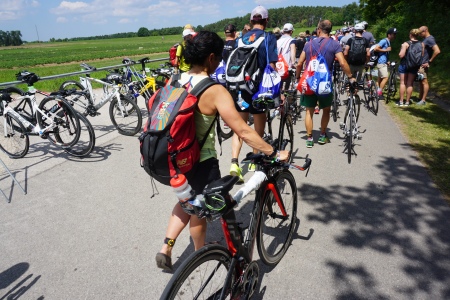
Racecation friends Brenda and Keith. Brenda is sporting the race backpack.
This was one more example of solid logistics from RaceQuest. Everything went off without a hitch. Along the way, I happened to meet a great group of triathletes from the Boston suburbs, who wound up joining us for pre-race Italian in Nuremberg later that night.
We’d been warned several times over that they would be diligently checking bike helmets during check in for cracks. They also checked the bike straps and made us tighten them to ensure that the strip would not go over the chin. This is just to say, make sure if you are doing a race like that that your helmet doesn’t have any tiny cracks in it otherwise you’ll be forced to buy a new one on the spot. One other note: we were told not to bring our own bike pumps (not that I’d packed one anyway) because there would be plenty in transition in the morning. This advice was accurate.
As it turned out, my new buddy Frank and I were two race numbers away from each other and so we found our spot the massive transition zone to rack up the bikes.
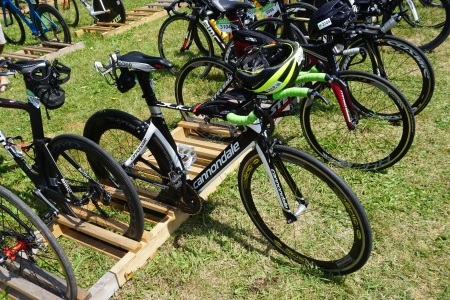
Walking back to the busses, we had a beautiful view of the course before us, and it filled me with excitement and all kinds of nervousness for what lay ahead, all of which will be detailed in Part 2!








